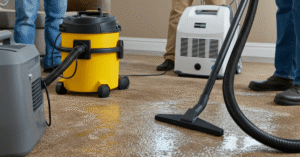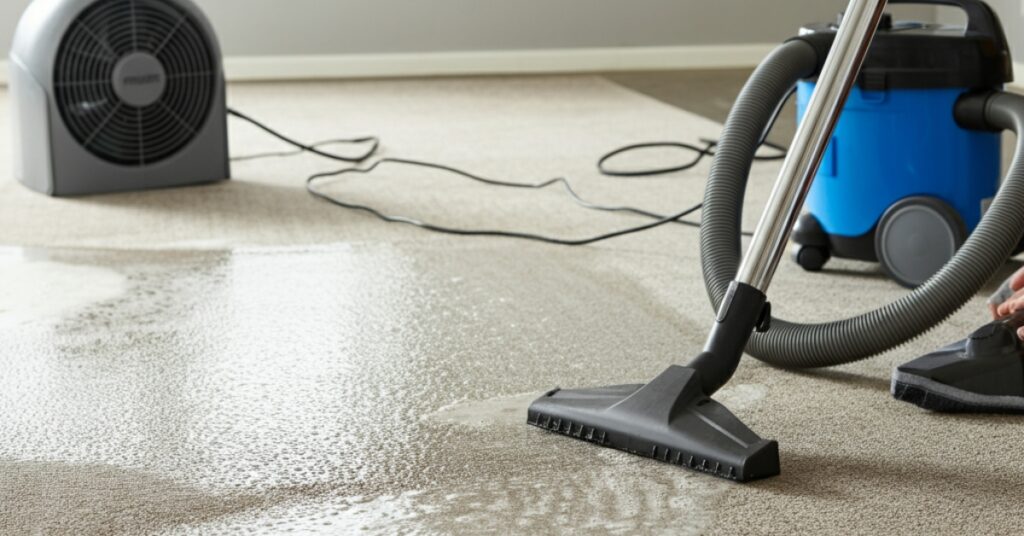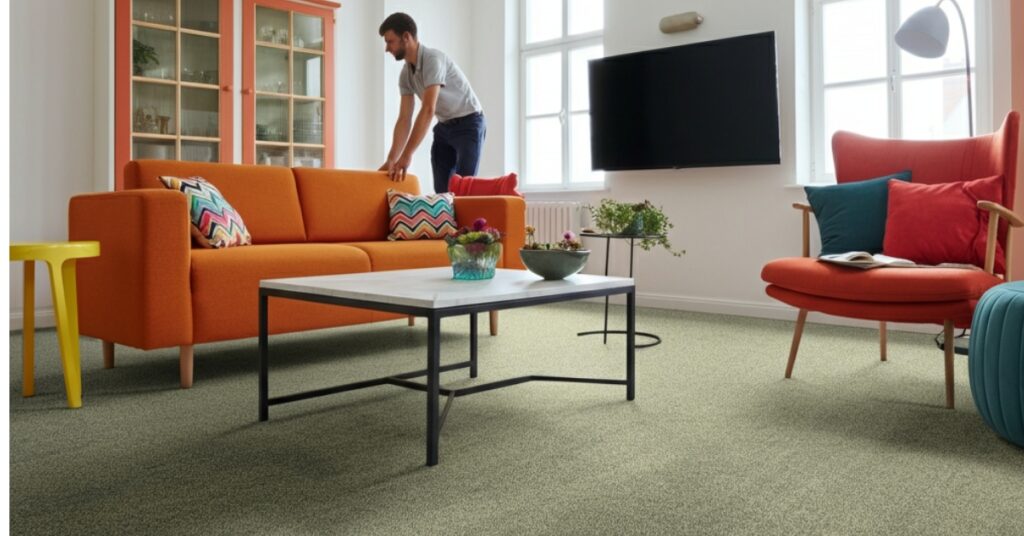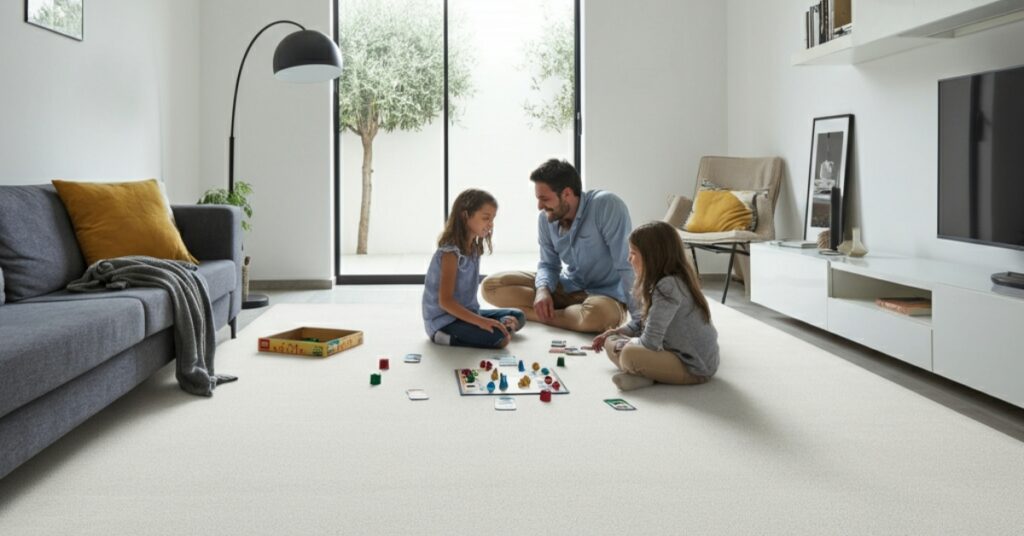As an Amazon Associate, I earn from qualifying purchases.
Steam cleaning is one of the best ways to get carpets really clean. Hot water vapor works its way deep into the fibers, loosening dirt, killing germs, and removing allergens way better than just vacuuming or spot cleaning. But after a long steam cleaning session, everyone wants to know the same thing: “How long does it take for the carpet to dry?”
The answer is, it depends. A bunch of things affect drying time, like the type of carpet you have, the cleaning method you used, the temperature in the room, the humidity, and how well the air is moving. If the carpet stays wet for too long, even the cleanest one can start to grow mold and mildew.
Here’s your go-to guide on how long your carpet will take to dry after steam cleaning, what speeds drying up or slows it down, easy actions to speed things up, and expert tips to prevent musty smells and mold after the cleaning.
What Makes Wet Carpets Dry Faster or Slower
To figure out how long it will take for wet carpet to be dry, start with what affects drying time. Some things you can tweak; others depend on the room you’re in.
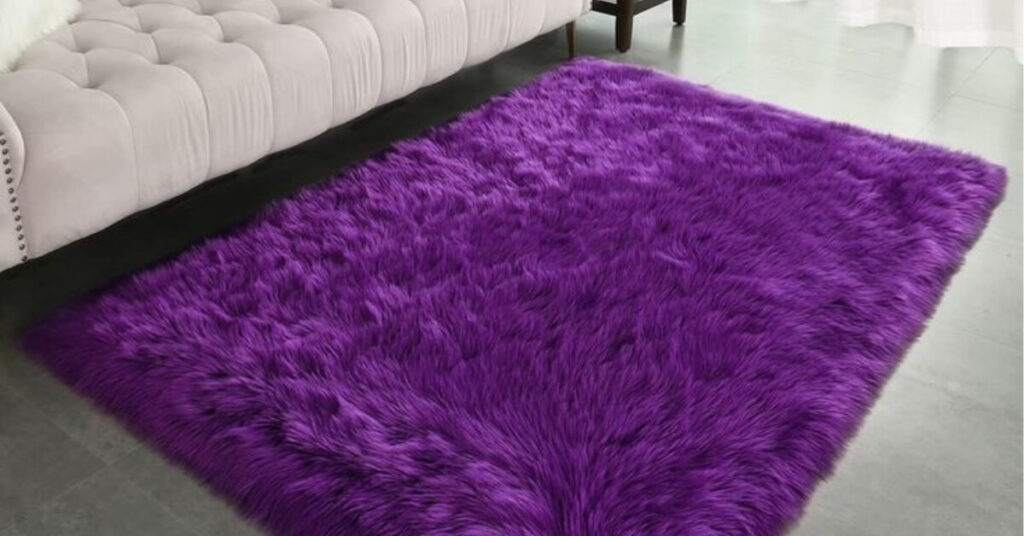
1. Carpet Type
The material your carpet is made of plays a big role:
- Synthetic fibers like nylon, polyester, and olefin fight moisture better than natural fibers. They soak up less water and can go from wet to dry in about 4 to 6 hours, sometimes less.
- Natural fibers such as wool, cotton, and silk grab onto moisture. A wool carpet, for instance, can stay wet for 12 to 24 hours or more, especially in corners or spots where air doesn’t move much.
- Carpets made of both natural and synthetic fibers usually dry in between the two types, but the drying speed will tilt toward whichever material is more abundant.
- For example, if your living room features a wool broadloom carpet on thick padding, drying will take longer than if the same space had a low-pile nylon carpet.
2. Carpet Thickness and Padding
Thicker, plusher carpets—like shag or high-pile—give more fibers and surface area for water to stick to. Plus, thick padding underneath soaks up extra moisture, making things slower. In contrast, thin low-pile carpets or commercial-grade looped styles, often with little to no padding, let water escape more quickly.
Practical Insight
Padding can be a wild card. A thin carpet on a sponge-like pad can take longer to dry than a heavy carpet on a non-absorbent, moisture-wicking pad.
3. Room Temperature and Humidity
- Warm, low-humidity spaces speed up the drying process. This is why carpets dry fast during a sunny, dry stretch outside.
- Cold or humid weather slows down how quickly water can leave carpet fibers, making carpets take longer to dry. Humidity behaves like a heavy “blanket” that keeps moisture locked inside the strands.
- For example, A summer steam clean with the AC on can mean dry carpets in only a few hours. On the other hand, a winter cleaning done in a damp basement can stretch drying time to a full day or longer.
4. Air Circulation
Good airflow and fresh air work wonders for speeding up carpet drying. A stuffy, closed room makes moisture stick around. You can open windows, run exhaust fans, use ceiling fans, or set a box fan directly over the wet carpet to push the humid air out and pull dry air in.
Handy Tip: After cleaning, always check for return air vents or built-in fans. If you can, set them up for cross-ventilation to get dry air moving from one side of the room to the other.
5. Cleaning Method
The way you clean the carpet matters, too, especially the tools you use.
- Professional steam cleaners usually have powerful suction that removes most of the water, leaving fibers just slightly damp. This means the carpet can dry fast.
- DIY rental machines often lack the same extraction power and can leave behind extra water, slowing down the whole drying process.
- Shampooing too often, or taking too long on each cleaning pass, can soak the carpet overly deep and keep the backing damp for hours.
- For instance, with a quality commercial steam cleaner and average airflow in a normal house, most carpets feel dry in 6 to 8 hours. But a homeowner using a rented machine and pouring on too much water might see that time stretch to 12 hours or longer.
Typical Drying Times for Common Carpet Styles
With the influencing factors sorted, here’s a look at what you can generally expect depending on the carpet type and the conditions you face.
Low-Pile Carpets in Light Traffic Areas
• Drying time: 4 to 6 hours
• Reason: Commercial carpets and tight-cut synthetic styles have little padding to soak in moisture, so water mostly stays on the surface. Boosted airflow and low humidity can shave that down to 4 hours.
High-Pile and Plush Carpets
• Drying time: 6 to 12 hours
• Reason: Looser, longer fibers like soft frieze or shag trap air and moisture, making the backing slow to dry. Without fans or airflow help, you’re more likely to see the 12-hour mark.
Natural Fiber Rugs (Wool, Cotton)
Expected Drying Time: 12-24 hours
What Happens: Thick, hand-knotted wool rugs soak up a lot of water. When the room is sealed tight or the humidity is high, they might still be damp after a day.
Humid or Poorly Ventilated Rooms
Expected Drying Time: 12-24 hours (or longer)
What Happens: When a room lacks windows, fans, or air conditioning, or if it’s pouring rain, your carpets might still feel wet the next day.
| Carpet Type | Average Drying Time | Environment/Conditions |
| Low-pile synthetic | 4–6 hours | Good airflow, low humidity |
| High-pile/plush | 6–12 hours | Moderate conditions |
| Natural fiber (wool) | 12–24+ hours | Humid/poor airflow |
| Large area, thick padding | 12–24+ hours | Limited ventilation |
Important: Any carpet that looks or feels damp after 24 hours needs extra attention to prevent
Note: If any carpet looks or feels damp after 24 hours, give it extra drying to stop mold or mildew from growing.
Tips to Speed Up Carpet Drying After Steam Cleaning
Nobody enjoys tiptoeing on a wet carpet. If you’re getting ready for visitors or just want the house back to normal, these tried-and-true tricks will help your carpet dry faster:
1. Crank Up the Fans
Get as many fans running as you can. Place box, oscillating, or floor fans all over the space. Aim some at the wet carpet and others toward any open windows or doors. Even a ceiling fan on high can help.
2. Crack Open Windows and Doors (if the Weather’s Right)
When the air outside is drier, fresh air moves moisture away from the carpet. Open windows on opposite sides of the room to create a cross-breeze. Just steer clear of this tip on rainy or humid days, when it can drag more moisture inside.
3. Use a Dehumidifier
This is a game-changer in damp areas like finished basements or laundry rooms. A good dehumidifier sucks moisture from the air, helping the carpet dry from the top down. Run it all day for the best results.
4. Turn on Your HVAC System
Set the thermostat to “fan on” and let the system keep air circulating. Use a cool setting for hot, humid weather and heat for damp, cold days. The steady airflow will help your carpet dry more evenly.
5. Limit Foot Traffic and Furniture Replacement
Once your carpet has been cleaned, please allow it 6 to 12 hours without foot traffic. Walking on damp fibers pushes them down, making them take longer to dry and risking permanent indentations or color changes. If you set furniture back in too soon, moisture can get stuck underneath and cause stains or mold.
6. Use Carpet Drying or Air Movers
For fast, pro-level drying, rent or buy commercial air movers. These small turbine fans blast air straight onto the carpet, drying it often twice as fast as standard fans can.
7. Don’t Overwet During Cleaning
When you steam clean, always use the extraction mode to pull out as much water as you can. Don’t go back and wet the same spot again unless it’s really needed. Use only a little detergent and wring or suction out as much moisture as possible.
Bonus Tip: Once the carpet is dry, sprinkle a light layer of baking soda on top. It soaks up any leftover musty smells. Let it sit for a while, then vacuum it up for a fresher carpet.
Common Problems and How to Dodge Mold or Mildew
A soggy carpet invites unwanted guests. Here’s how to keep your floors safe:
Problem 1: Humidity Is Too High
Even the best steam job fails if humidity is too high afterward. Moist air sticks around and, soon enough, you’re smelling mildew.
Solution: Grab a decent hygrometer to keep tabs on moisture. Fire up fans and dehumidifiers right after you clean. Aim to keep humidity under 60%. For an extra boost, leave your HVAC on for a solid 24 hours.
Problem 2: Slow Drying Time
A carpet that’s still damp a full day after cleaning is asking for trouble. Wet fibers can stretch, and strange smells start to creep in.
Solution: Check your technique. Did you over-soak the carpet? Did you use airflow boosters? If the problem keeps showing up, call a pro with high-extraction, low-moisture tools that get the job done.
Problem 3: Padding Holds the Water
Old foam or rubber padding can trap moisture like a sponge, making surface drying impossible.
Solution: When you’re putting down new carpet, pick moisture-resistant padding. For the stuff already down, lift a corner to peek for trapped water and blast it with fans if you find any.
Problem 4: Lingering Odors or Surface Mold
If musty smells cling stubbornly or you see fuzzy green or white patches, you’ve got a mold problem.
Solution: Play it Safe
Stop mold for good. Spritz a carpet-safe antimicrobial spray on the area, crank up the ventilation, and if the mold sticks around, yank out the affected carpet or pad and send it to a pro for thorough cleaning or replacement.
Conclusion
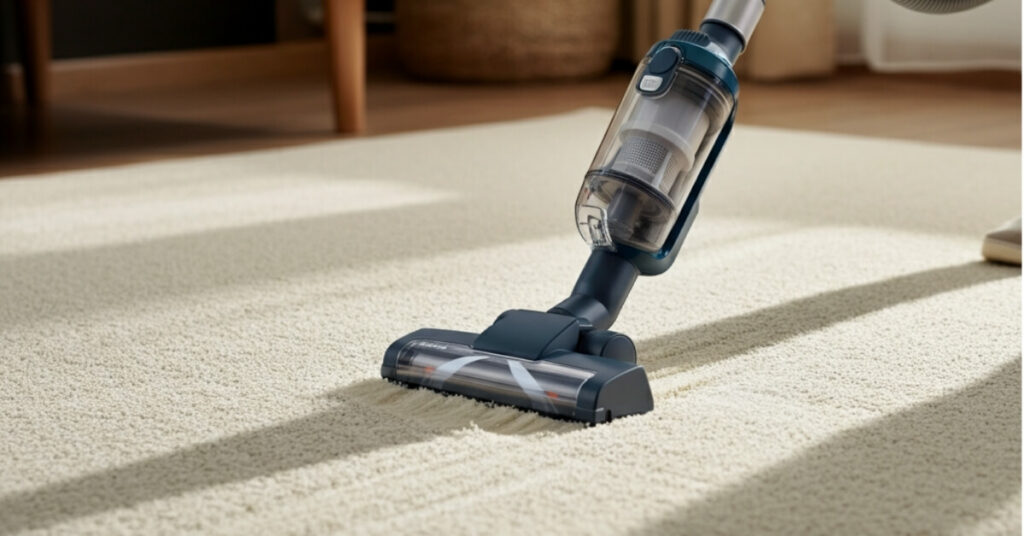
Steam cleaning can make your carpet bounce back with fresh colors and smells, but drying it right is just as important as the scrub. Drying can zip through in 4 hours for thin, synthetic carpets in perfect conditions, or drag out past 24 hours for thick, plush, or natural-fiber carpets when the weather is humid. By fine-tuning airflow, humidity, and moisture, you keep the carpet safe from allergens, odors, and stubborn mold.
Next time you book a cleaning, prep smart: toss on fans and a dehumidifier, keep feet off the carpet for a few hours, and keep an eye on spots that stay wet. These small steps help your carpet last longer and keep your home welcoming and healthy. For the next step, check out our guide on how to dry carpet after cleaning.
FAQs
How long should I wait before walking on the carpet?
You should leave the carpet alone for at least 4 to 6 hours. For thicker carpets or high-traffic areas, wait as long as 12 hours. If you need to step on the carpet before it’s dry, put on clean socks or shoe covers.
Does humidity affect carpet drying time?
Yes. High humidity slows drying. Use fans or a dehumidifier to help if needed.
Can I use fans or heaters to dry the carpet faster?
Yes, fans and moderate heat can speed up drying. Don’t overheat the carpet.
Is steam cleaning better or worse for drying time compared to other methods?
Steam cleaning takes longer to dry than dry cleaning but offers a deeper clean.
What if my carpet stays damp for more than 24 hours?
Increase airflow and use a dehumidifier. If dampness or odors persist, call a professional.
As an Amazon Associate, I earn from qualifying purchases.

